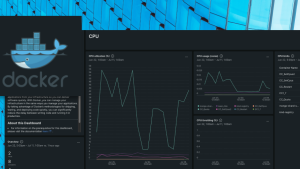Deploying new code in today's dynamic software landscape is more than just a routine task; it's a critical process that demands attention to detail and foresight. Understanding the implications of these deployments on your infrastructure prior to pushing them to production is not just beneficial—it's essential. The failure to recognize and prepare for the impact of new code can lead to significant service disruptions, user dissatisfaction, and even catastrophic system failures.
Start with a deep understanding of your infrastructure
Infrastructure forms the backbone of any software service. It includes a variety of components, such as servers, databases, networks, and application services, all of which are interconnected. Identifying the dependencies and relationships between these components is crucial for maintaining a robust and resilient infrastructure. Best practices in infrastructure management recommend a comprehensive approach, ensuring that every component is accounted for and properly maintained.
- Comprehensive documentation: Maintain detailed documentation of your entire infrastructure, including network diagrams, server specifications, and application dependencies. This provides a clear understanding of the infrastructure layout and aids in troubleshooting.
- Regular audits and updates: Conduct regular audits of the infrastructure to ensure all components are up to date and secure. This includes updating software, patching vulnerabilities, and replacing outdated hardware.
- Automated monitoring: Implement automated monitoring tools to track the performance and health of your infrastructure in real time. This enables quick detection of anomalies and potential issues.
- Disaster recovery and backup plans: Develop and regularly test disaster recovery and backup plans to ensure data integrity and system availability in the event of a failure.
- Scalability planning: Design your infrastructure with scalability in mind. This includes using scalable resources like cloud services and load balancers to handle varying loads.
- Security measures: Implement robust security measures, including firewalls, intrusion detection systems, and regular security audits to protect against external and internal threats.
Deployment best practices: Preparing for impact
Deployments, especially those involving significant changes or new features, can have a profound impact on existing infrastructure. It's vital to identify potential risks and challenges associated with new deployments. Strategies such as canary releases offer a way to gradually introduce changes, minimizing potential disruptions. It's essential to follow code deployment best practices that focus on understanding and mitigating the impact of deployments once they go live.
- Thorough testing: Conduct comprehensive testing in a staging environment that mirrors the production environment as closely as possible. This includes load testing, security testing, and user acceptance testing.
- Gradual rollouts: Use strategies like canary releases or blue-green deployments to gradually roll out changes. This allows for monitoring the impact of the deployment on a small segment of users before a full rollout.
- Feature flagging: Implement feature flags to toggle new features on or off without redeploying. This provides flexibility in controlling feature releases and quickly addressing issues.
- Post-deployment monitoring: Intensify monitoring immediately after deployment to quickly catch any issues. This includes tracking key performance indicators and user feedback.
- Automated rollbacks: Have automated rollback processes in place in case the deployment introduces critical issues. This minimizes downtime and service disruption.
- Clear communication channels: Maintain clear communication channels among development, operations, and support teams. This ensures everyone is on the same page and can respond quickly to any issues.
- Continuous feedback loop: Establish a continuous feedback loop where learnings from each deployment are used to improve subsequent ones. This includes analyzing deployment successes and failures to refine processes.
Implementing these best practices can significantly reduce the risks associated with deploying code changes and contribute to maintaining a stable and efficient software development lifecycle.
Observability’s key role in testing and validation
Observability plays a crucial role in understanding the impact of deployment on infrastructure. It involves monitoring and logging various metrics and events, providing insights into how a deployment affects system performance and stability. Implementing monitoring as code practices enhances observability by allowing teams to manage and version their monitoring and alerting configurations as code, which is essential for automated, scalable, and reliable monitoring systems. Observability tools enable real-time monitoring, allowing for prompt identification and resolution of issues. For example, deploying synthetics from Kubernetes environments can be enhanced with observability, ensuring smooth and successful rollouts. Observability transcends traditional monitoring by providing deeper insights into how deployments impact the infrastructure. It involves:
- Real-time monitoring: Continuously tracking system performance, user interactions, and application health.
- Proactive problem solving: Utilizing observability data to preemptively identify and solve potential issues before they escalate.
- Performance optimization: Leveraging observability insights to optimize system performance and user experience.
- Data-driven decisions: Making informed decisions based on comprehensive data analysis.
Post-launch: Monitoring and maintenance
After a deployment goes live, the focus shifts to ongoing monitoring and maintenance. Continuous monitoring of the infrastructure helps in quickly identifying and addressing any issues that may arise post-deployment. Observability tools are invaluable in this phase, providing detailed insights into the system's performance and helping maintain a healthy infrastructure. The integration of observability into the development and deployment lifecycle, as evidenced by New Relic infrastructure monitoring solutions, exemplifies how continuous monitoring can be seamlessly incorporated into software development practices. With New Relic you can see your entire stack in one view, with infrastructure monitoring, APM, logs, and more, on the most powerful, all-in-one observability platform. No more data silos, and no more swiveling between different tools. So you can squash bugs before your customers, or boss, notices.
With application data inside the infrastructure UI, you can analyze the performance of your applications and their underlying infrastructure together on a single screen. And with an intuitive, customizable UI and over 700+ integrations and quickstarts, it’s easy to get started.
Effective post-launch strategies include:
- Continuous monitoring: Implementing ongoing surveillance of system performance and user interaction data.
- Issue identification and resolution: Quickly identifying and resolving issues as they arise to minimize impact on users.
- Regular updates: Keeping systems and software up to date to ensure optimal performance and security.
- Feedback integration: Incorporating user and stakeholder feedback into future updates and improvements.
Conclusion and additional resources
Understanding the impact of code deployment on infrastructure is crucial for any software engineer. Observability plays a key role in this process, offering the necessary tools and practices to ensure successful and stable deployments. For further insights and resources, software engineers are encouraged to explore additional materials and sign up for services like New Relic, which offer comprehensive solutions for deployment and infrastructure monitoring.
次のステップ
Ready to elevate your deployment strategy?
Embark on a journey towards impeccable deployment practices and unparalleled infrastructure understanding with New Relic. Don't just guess; know. Gain comprehensive insights, optimize performance, and ensure seamless deployments every time.
Start for free today! Sign up for New Relic and access 100 GB of free data ingest per month. Enhance your time to deployment strategies, optimize your infrastructure, and join a community of forward-thinking engineers.
本ブログに掲載されている見解は著者に所属するものであり、必ずしも New Relic 株式会社の公式見解であるわけではありません。また、本ブログには、外部サイトにアクセスするリンクが含まれる場合があります。それらリンク先の内容について、New Relic がいかなる保証も提供することはありません。


